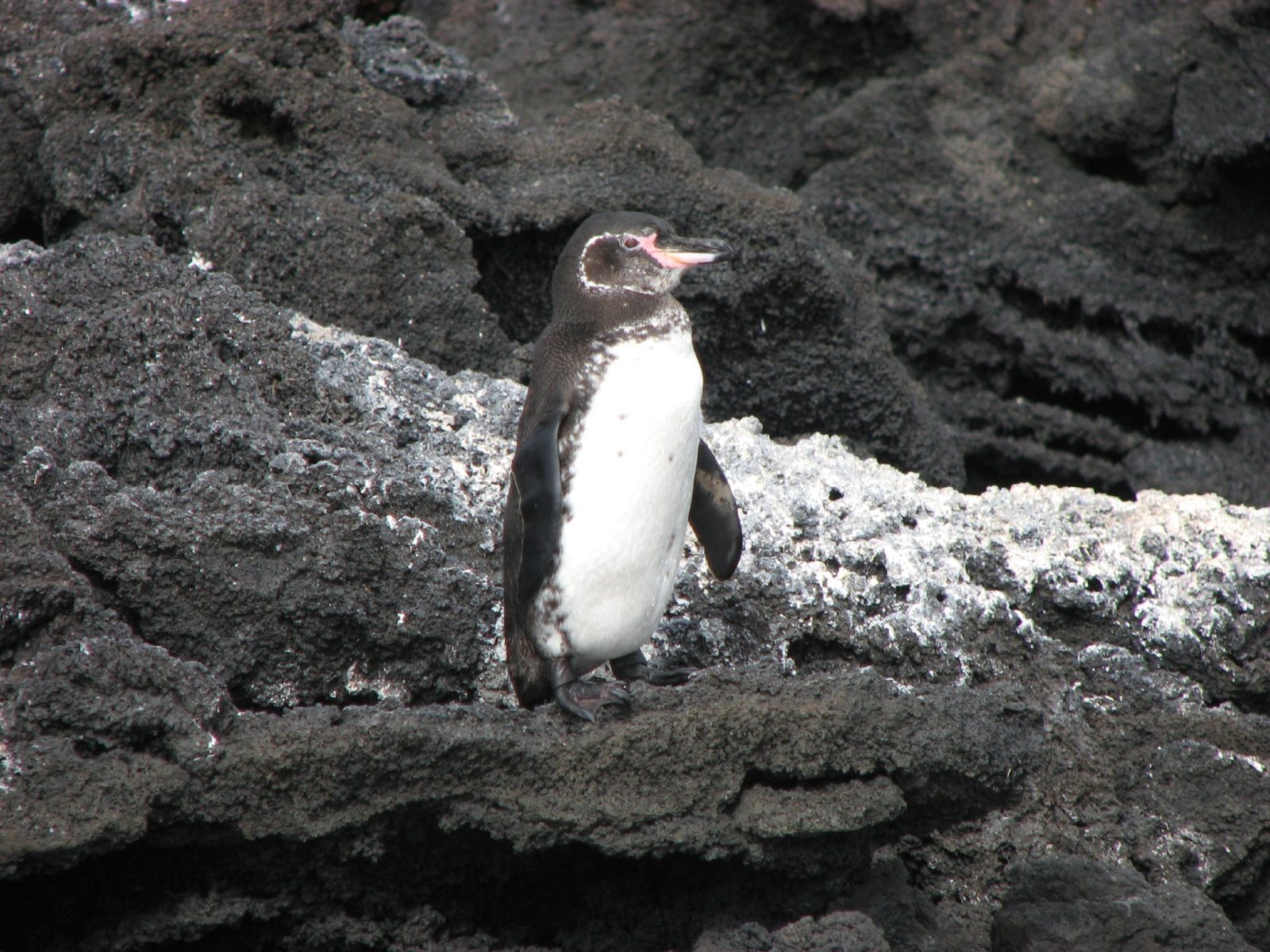
Galapagos Penguin
Found on the Galapagos islands, and on the mainland of Ecuador. It is unique in the fact that it is the only penguin to live in the northern hemisphere. Humbolt and Cromwell currents bring cold water, allowing penguins to survive in areas which would otherwise be too warm.
They are monogamous, but breed at any time of year. Average size is 48-50cm long, and weighing 2-4kg long.
It is thought that the Humboldt current brought these penguins from mainland South America, where they then bred in isolation. Mostly, they eat small schooling fish in this current, though they also consume crustations. They hunt during the day, and spend the night on land.
There are only around 1200 mature individuals remaining in the world, usually only raising one chick each year. The parents take it in turns to go to sea for a couple of days at a time. They are classed as endangered.
They moult before having young, being the only penguin to moult twice a year. It is thought that they do this, as food in the are is hard to find. The chicks are independent after around 65 days. El Nina years are bad for this population, with the population falling around 50% in these years. One of its vulnerabilities is the fact that it is only found within these islands, so a localized event can damage the whole population.
It is estimated, that should El Nino climate states double in frequency, the odds of extinction would be 80%.
Among the various problems that climate change give these species, are very much threatened by sea level rise, as a relatively small increase would wipe out many of their breeding grounds.
Humans have also brought in a variety of invasive species, which cause further problems for the Penguins. They do not migrate huge distances. Oil spills and competition for sea food (from humans) both threaten this species. Tourism, particularly eco-tourism is an important part of Galapagos economy, bringing in billions to the local economy. It is unfortunately true, that not all of this is done in a way, which protects the wildlife it relies on for the future.